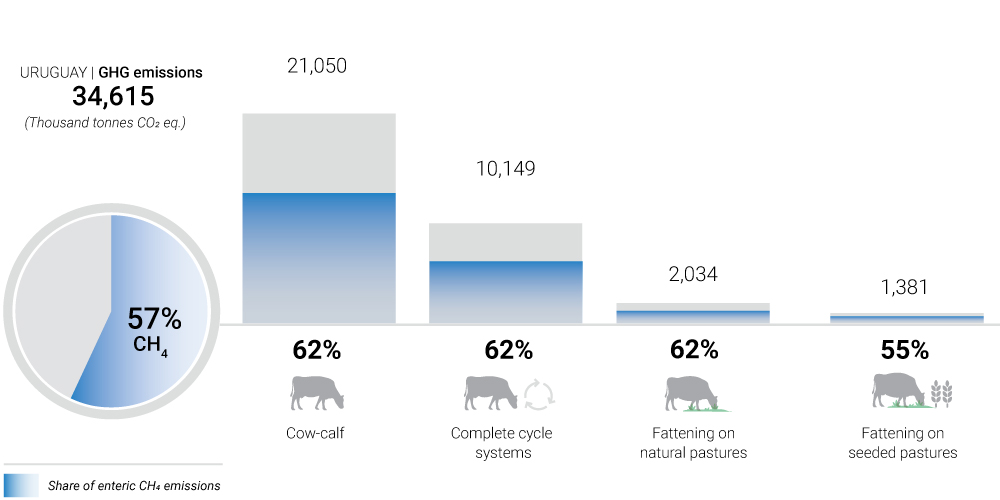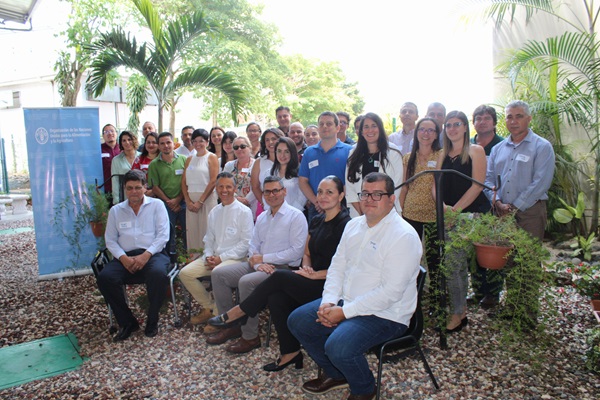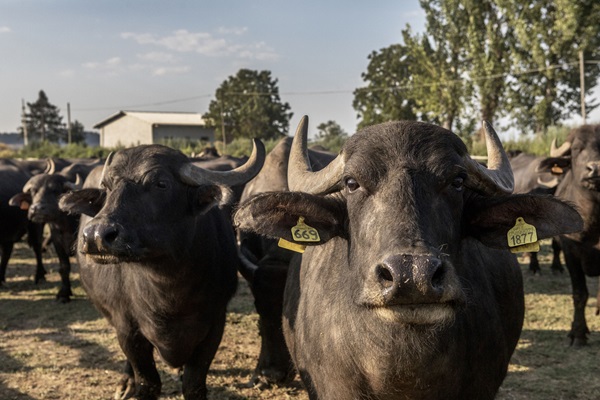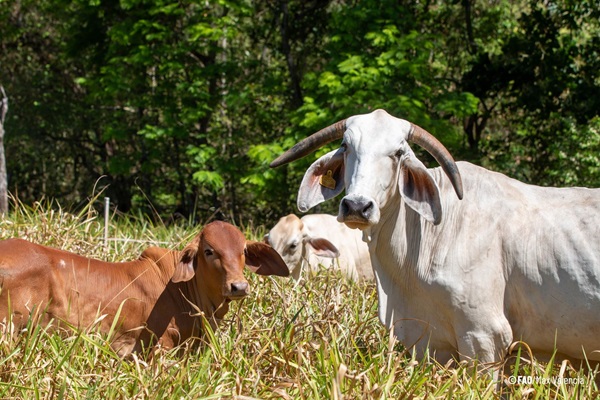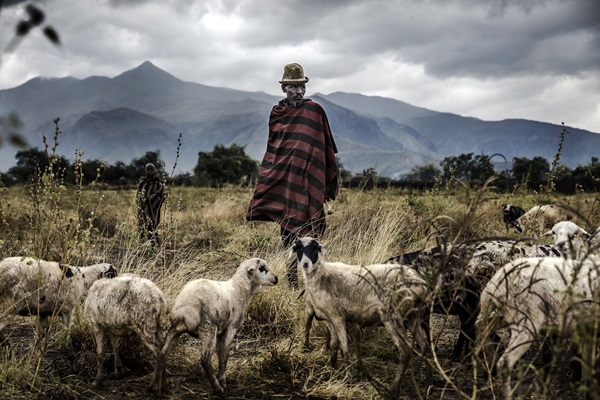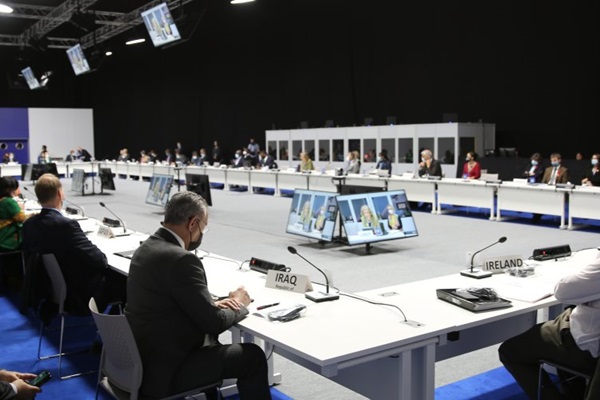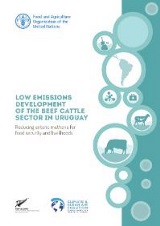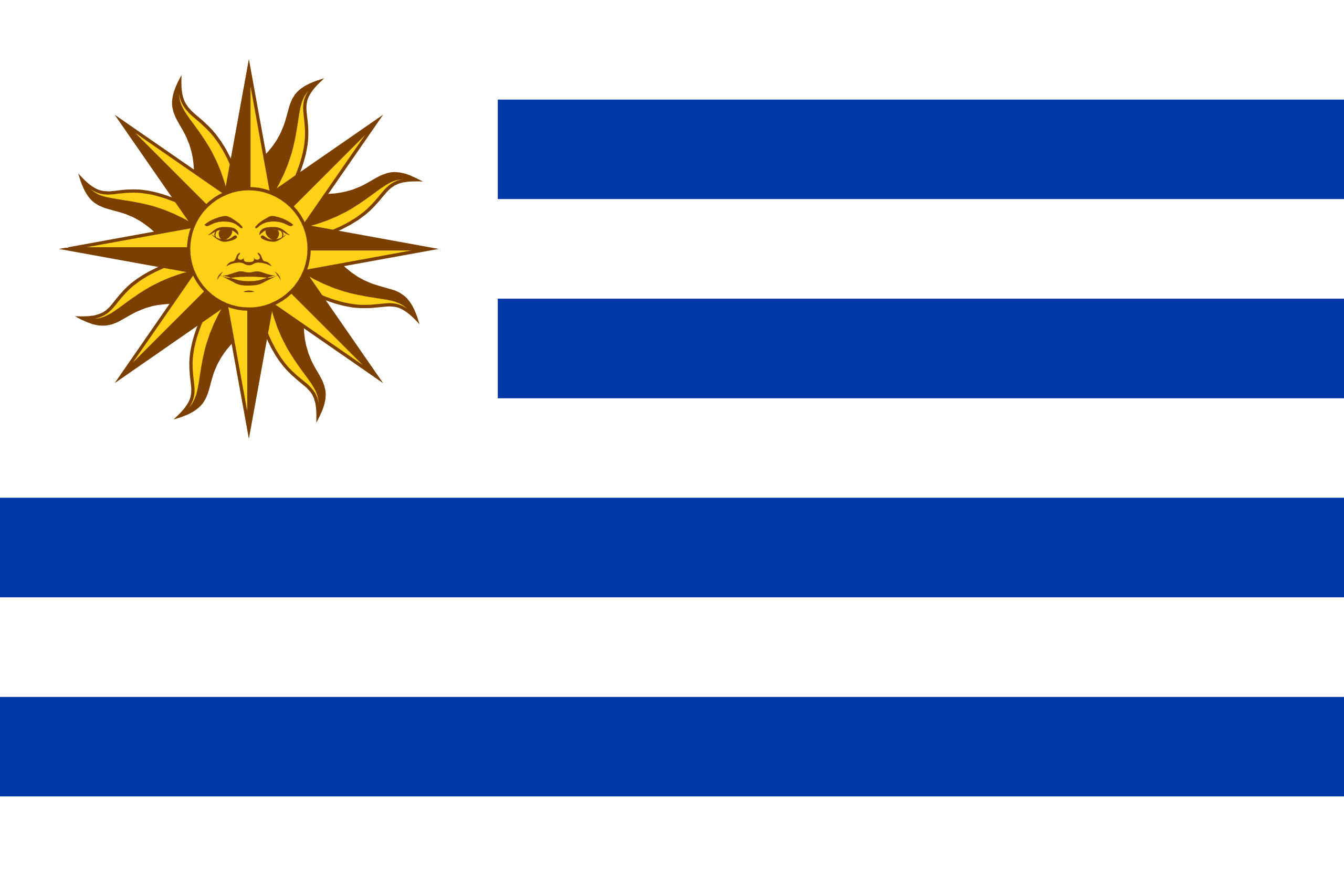 Uruguay
Uruguay

DC_Uruguay
- 3.5 million
Human population - 94.9 million
Livestock population - 68% Chickens, 19% Cattle, 11% Sheep and 2% other
Livestock composition - 6.9 percent
Agriculture, forestry, and fishing, value added (% of GDP)
Overview
Cattle production is one of the most important economic sectors and sources of export earnings in Uruguay. Uruguay’s position in the global beef market has been enhanced by a number of factors, including its sanitary and disease status and traceability system. Lowering the emission intensity of beef production systems can create an additional competitive advantage for the national beef sector of Uruguay in the future. Beef cattle production in the country is distributed across seven agroecological zones.
Baseline greenhouse gas emissions
In 2014 the beef cattle sector in Uruguay emitted 31.5 million tonnes carbon dioxide equivalent (CO2-eq.) of greenhouse gases with enteric methane accounting for over 63 percent of the total. Grass-based systems, such as cow-calf and complete cycle systems, were responsible for 77 percent of total greenhouse gas emissions. The emissions varied by production phase, including rearing and finishing on natural pastures (6 percent), improved pasture (4 percent) and finishing in feedlots (2 percent). Uruguay’s emission intensities per kilograms of live weight (LW) were:
8.6 kg CO2-eq./kg LW for animals finished on natural pastures
7.9 kg CO2-eq./kg LW for animals finished on improved pastures
10.5 kg CO2-eq./kg for animals in feedlots
Mitigation interventions
The herd management factors that influence emission intensity in Uruguay’s beef production are inadequate and poor nutrition (i.e. the low supply of high-quality pastures), low reproductive efficiency, and large breeding overhead for the cow-calf system. When it comes to the finishing system, the long and inefficient rearing and finishing periods, particularly for animals finished on natural pastures, influence emission intensity. Controlled mating and early weaning, winter supplementation and inter-seeding natural pastures with legumes can reduce emission intensity up to 42 percent and increase beef production up to 68 percent.
